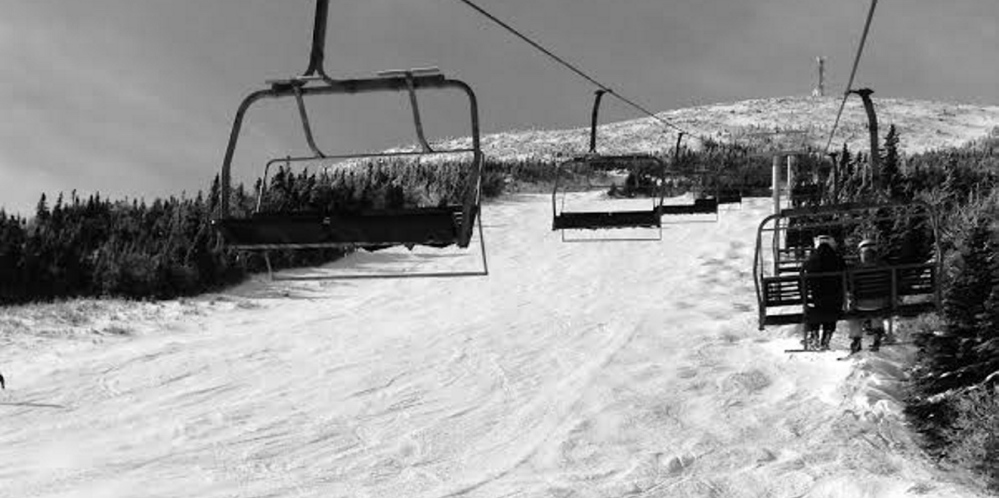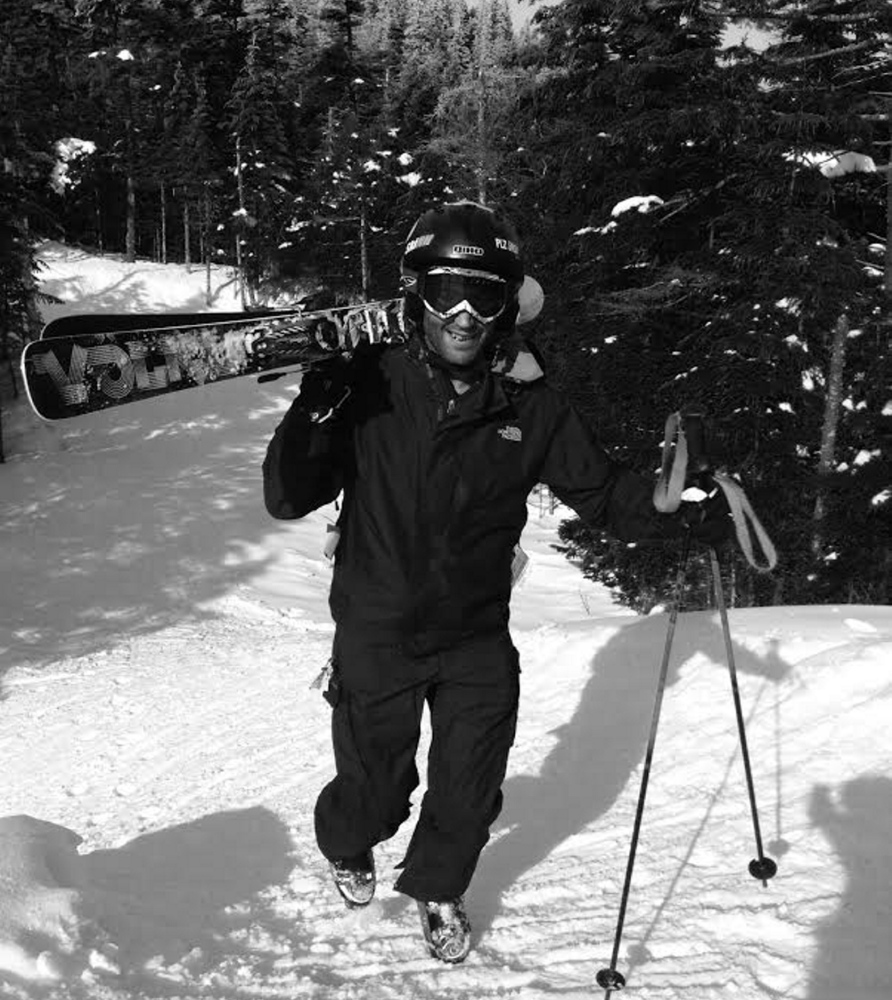After weeks of rain, snow and polar vortices, spring skiing made a surprise appearance in the Maine mountains last weekend. Bright sunshine, mild temperatures and an atypical lack of wind gave skiers and snowboarders a preview of what we can expect toward the end of the season.
It’s the type of weather that reminds you both why you love the sport and why you love particular places. I put in a long weekend at Sugarloaf, and it reaffirmed my affection for this big, remote mountain. Not only that, it reminded me how much I love a very specific part of the mountain – the eastern side, including the King Pine Bowl and the rapidly growing Burnt Mountain expansion.
Part of this comes from basic grade-school science – as the sun rises, it hits the east-facing part of the mountain first, bathing it in warmth and sunlight. When other skiers hop off the SuperQuad and head for some of the still-in-shadows trails mid-mountain, I head for the sharp contrast of the bright sun.
There’s also the terrain, some of the most technical, challenging and downright fun trails on the mountain. Starting around Winter’s Way, Sugarloaf’s first trail, cut by hand in 1950 and extending all the way to the summit of Burnt Mountain, you find a mix of trails made mostly of single and double black diamonds. Most of Sugarloaf’s glades and ungroomed, natural “wild thing” trails sit on this side of the mountain.
Lots of publications have made a lot of noise about the uniqueness of Burnt Mountain and Brackett Basin, the new “sidecountry” terrain developed as part of the resort’s 2020 Ten-Year Road Map. As someone who has skied in the Northeast for his entire life, I can confirm that the 650-acre expansion is indeed unlike anything else east of the Rockies, at least in terms of lift-accessed terrain.
Stretching into the woods beyond bumpy Ripsaw in the King Pine area, this new terrain is made up of three fairly distinct areas – the Cant Dog glades and Brackett Basin, the Eastern Territory and Burnt Mountain.
Cant Dog, which was first cut about a decade ago, has expanded into a number of hand-cut chutes and glades that dump skiers back at the King Pine lift. Brackett Basin, just beyond this, features a mix of tight glades, more wide-open areas, and cliffs on trails like Birler and Sweeper that eventually funnel skiers down to King Pine or Whiffletree.
A traverse on the Golden Road trail, which necessitates a lot of skating or removing your equipment to hike, leads to the commercially logged Eastern Territory. The terrain, which opened last season, features spectacular wide-open glades that funnel skiers past Sugarloaf’s base area and onto a mix of Nordic and hiking trails. It takes some effort, but eventually riders work their way back to Snubber, almost 400 vertical feet below the base lodge.
Just weeks ago, the summit of neighboring Burnt Mountain was opened to skiers and riders. Accessible by the Burnt Mountain hiking trail, reaching the summit requires skins or snowshoes and is recommended only to those who have experience with backcountry skiing or riding. But once you’re out there, it provides a spectacular experience akin to genuine backcountry.
The Eastern Territory and Burnt are a time commitment. A round-trip from the top of King Pine to the base of Snubber can take a few hours.
The King Pine Bowl itself, serviced by a fixed-grip quad and the Skyline lift, is a playground of steep, expert terrain. Widowmaker, perhaps my favorite trail at Sugarloaf, offers a perfect consistent pitch that rolls onto the heart-in-your-throat steep Flume. Misery Whip, the former home of the #5 T-bar, is a narrow can’t-miss-a-turn shot that’s only about a groomer track wide. Even Haul Back, a trail that seems to occasionally fight with the natural fall line, is fun to ski; its home under the chairlift makes it perfect for exposition.
Between King Pine and Winter’s Way, it’s a handful of steep, straight adrenaline shots. Accessible from the summit or the Spillway crosscut, trails like Gondola Line and White Nitro, the steepest trail in the east, simply drop away from under you. Bump trails like Bubblecuffer and Winter’s Way check your speed and offer a different challenge, with massive moguls and glades between the trails, including a new, still-unnamed one between Gondi and Bubblecuffer.
Whiffletree, the kid- and beginner-friendly area below the King Pine Bowl, also offers unique thrills. Poleline, a beginner-to-intermediate trail below Boomauger, offers fun rolls down a slope dotted with utility poles. Buckboard is a narrow, twisting cruiser in the classic New England mold and affords stunning views of the Bigelow range. Even the newly revamped Moose Alley is a hoot, recalling a luge run of banked turns, though a new sign warns that adults aren’t allowed in without children.
So next time you’re at Sugarloaf, Go East, Young Man. There’s plenty of good skiing in Carrabassett Valley, but if you’re looking for the best stuff you’d better head in that direction.
Josh Christie is a freelance writer and lifetime outdoors enthusiast. He shares column space in Outdoors with his father, John Christie. Josh can be contacted at: joshua.j.christie@gmail.com
Send questions/comments to the editors.




Success. Please wait for the page to reload. If the page does not reload within 5 seconds, please refresh the page.
Enter your email and password to access comments.
Hi, to comment on stories you must . This profile is in addition to your subscription and website login.
Already have a commenting profile? .
Invalid username/password.
Please check your email to confirm and complete your registration.
Only subscribers are eligible to post comments. Please subscribe or login first for digital access. Here’s why.
Use the form below to reset your password. When you've submitted your account email, we will send an email with a reset code.